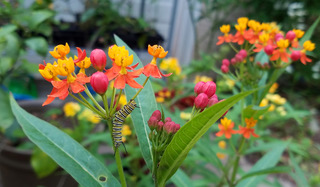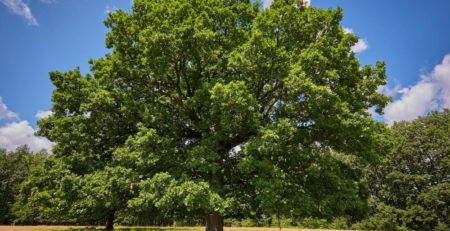How to Help the Monarch Butterflies
Fall is my favorite season: enjoying the outdoors after the heat of summer, getting back into a routine, the abundance of flowers, and most of all the monarchs coming through on their way to Mexico. This year we probably won’t see as many monarchs as usual in North Texas. Our late winter freeze and low temperatures in March delayed the sprouting of milkweed so the monarchs heading north at that time were not able to lay their eggs to start the next generation. That caused a decline in the monarch population in the upper Midwest where migrators heading south through Texas this fall originate. A larger than normal number of monarchs are indicated in the East, but they won’t be coming through our area. I hope the monarchs are among your fall favorites too, and that you want to join me in helping them with their journey.
Did you hear that monarchs have been declared an endangered species by the International Union for Conservation of Nature (IUCN)? This is due to deforestation at their overwintering sites in Mexico and California; the loss of host and nectar plants due to pesticides and development in the U.S.; and climate change. IUCN has no authority to change laws in the U.S. The U.S. Fish and Wildlife Service has authority but has not designated the monarch as endangered. There are too many other animals in more danger of extinction in our country. The good news is that more people, towns, cities, and states are engaged in conservation efforts to increase the planting of host and nectar plants that help the monarchs and other pollinators.
There are things we can do during the fall in North Texas that will help grow the monarch population:
- The most important thing we can do is cut back the red and yellow-flowered tropical or Mexican milkweed (Asclepias curissavica) growing in our gardens. Cut it back to ground level by the end of September and keep cutting it back until the first freeze if it resprouts. Monarchs migrating South in the fall are biologically different from the monarchs we see in spring and summer. They are programmed to drink all the nectar they can, instead of reproducing along their flight south. If they mate and lay eggs during their fall migration, they will die instead of migrating the rest of the way south, and their offspring will emerge too late to drink enough nectar to survive the winter. The result is a net loss of population. Tropical milkweed is like Barry White music to monarchs and it can lure them to mature, mate and lay eggs. Researchers have even found that decreasing numbers of monarchs coincide with the availability of tropical milkweed to home gardeners. It is also good to cut back tropical milkweed in the fall because it can harbor spores from the OE (Ophrycystis elektroscirrha) parasite that can cause birth defects in the next generation of monarchs.
- Another very important way we can help monarchs is to provide nectar plants that bloom in October. If we don’t continue to get weekly rain after the late August floods, please keep watering the fall-bloomers to keep them alive and hydrated enough to produce nectar. This can help you enjoy monarchs’ visits to your yard. The two most important fall blooms for the monarch are Gregg’s mistflower (Conoclinium greggii) and frostweed (Verbasina virginica).
Gregg’s mistflower starts blooming in the spring, but is most prolific in the fall. It’s nectar has a medicinal element that attracts males and enriches the sperm they will use next spring when mating. Think of it as Viagra for butterflies. The guys will be so consumed with drinking it that we humans can get right up close to observe and photograph them.
Frostweed doesn’t bloom until fall. Once it does, it is covered with bees and all kinds of butterflies. Cut it back by a third in June so it won’t get so tall you can’t see the flowers at its top. Frostweed nectar is full of energy and like Red Bull for butterflies. It’s just what they need to keep them flying to Mexico. Both frostweed and Gregg’s mistflowers are perennials that drop their leaves with the first freeze. Don’t cut the dead frostweed branches back, however, because their sap breaks out of the stems when it freezes, creating a very interesting display.
- A third thing you can do is become a citizen-scientist, reporting monarch sightings to Journey North (org) or iNaturalist (iNaturalist.org) (they also have a phone app). These reports show where the largest number of migrators have been seen and let others know when to be especially observant in their area. The reports are also increasingly used by scientists in their research. The popularity of these online tools is like having grad students in every city and town adding to data collections.
You can go a step further and become a monarch tagger. Monarch Watch (monarchwatch.org) sells tags and provides information on the tagging program and how you can create a Monarch Waystation, i.e., a monarch habitat.
- And I forgot to mention the most important thing! It’s something I’ve been doing for so long that I don’t even think about it, and I bet most of you are already doing it, too. Stop using insecticides and make sure systemic pesticides have not been applied to the host plants you buy. Butterflies are insects, after all.
The monarch is the state butterfly of Texas and millions of them pass through our state on their way to Mexico in October; and then again on their way back north in March and April. Our big state plays an important role in maintaining their population. We should do everything we can to help them.













